At Best Cosmetic Hospitals, we understand the power of a confident smile. Your smile is one of the first things people notice, and it plays a significant role in your self-esteem and social interactions. Cosmetic dentistry offers a range of procedures designed to enhance, brighten, and perfect your smile, giving you the confidence to face the world with pride.
Cosmetic dentistry is about more than just aesthetics; it’s about improving the functionality of your teeth while creating a smile that you feel proud of. Whether you're looking to correct imperfections, replace missing teeth, or achieve a more radiant appearance, cosmetic dentistry provides solutions that are personalized to meet your unique needs.
Your smile can have a significant impact on your confidence and overall quality of life. Cosmetic dentistry not only improves the appearance of your teeth but also enhances oral health and function. Here are some of the key reasons people opt for cosmetic dentistry:

1. Improve the Appearance of Your Smile: Cosmetic dentistry addresses various aesthetic concerns, including discoloration, misalignment, gaps, chips, and uneven teeth. With treatments like teeth whitening, veneers, and bonding, cosmetic dentists can transform your smile into one that is bright, symmetrical, and visually appealing.
2. Boost Confidence and Self-Esteem: A smile that you feel proud of can significantly boost your confidence in both personal and professional settings. Whether it’s getting ready for an important event or simply interacting with others daily, cosmetic dentistry can provide you with the self-assurance that comes from knowing your smile looks great.
3. Correct Functional Issues: Many cosmetic dentistry procedures not only improve the appearance of your teeth but also correct functional issues. Treatments like dental crowns and implants can restore the structure of damaged or missing teeth, improving your ability to chew, speak, and maintain proper oral hygiene.
4. Reverse the Effects of Aging: As we age, our teeth naturally experience wear and tear, including discoloration, thinning enamel, and minor shifts in alignment. Cosmetic dentistry can help reverse these signs of aging, restoring the youthful vibrancy of your smile with treatments like teeth whitening, bonding, and veneers.
5. Achieve Long-Lasting Results: Cosmetic dentistry offers long-lasting solutions that can keep your smile looking its best for years to come. With proper care and maintenance, many cosmetic procedures can provide durable, lasting improvements to the appearance and health of your teeth.
Cosmetic dentistry encompasses a wide range of treatments designed to enhance the appearance, health, and functionality of your teeth. Here are some of the most popular cosmetic dentistry procedures offered by top dental professionals worldwide:
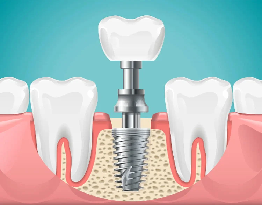
Dental implants are a permanent solution for replacing missing teeth. Unlike traditional dentures, implants provide a stable foundation for artificial teeth by placing a titanium post into the jawbone, which fuses with the bone over time. Dental implants not only restore the appearance of your smile but also improve the functionality of your teeth, allowing you to chew and speak more comfortably.
For some people, particularly persons with loose or poor fitting dentures due to flat ridges, or persons with multiple missing teeth who need support for crowns and bridges, implants may be considered a more appropriate alternative to fix the appearance of missing teeth than dentures.
Implants help to accomplish the following:
▣ Helps reduce movement of dentures, bridges and/or crowns
▣ Helps in proper chewing
▣ Provide support and improved stability for removable dentures or fixed bridge work
▣ Approximate the "feel" of natural teeth better than dentures
▣ Promote "denture self-confidence", as speech and appearance are often improved
Dental implants, while offering a permanent solution for missing teeth, do come with some Disadvantages. The procedure is invasive and requires surgery, which can lead to complications like infection, nerve damage, or implant failure in rare cases. Dental implants also tend to be more expensive than other tooth replacement options, and the process can take several months to complete, including healing time. Additionally, not all patients are suitable candidates for implants, particularly those with insufficient jawbone density or certain health conditions, which may require additional procedures like bone grafting.
Before undergoing this procedure the main factors to be considered are the following:
▣ The health of the patient
▣ Healing abilities to injuries
▣ Placement and technique
▣ Proper handling of the implant by the patient and the dentist
There are many different types of dental implants from which to choose, including:
Artificial bone substitute
In this kind of implant the similar kind of mineral that is found in bones is used. This helps the implant to bond to the existing jaw bone. The synthetic bone substitute is placed on top of the bone to help rebuild the shrinking ridge and provide a strong support for dentures.
Endosteal Implants are the most common type of dental implants, placed directly into the jawbone to serve as artificial roots for supporting replacement teeth. Typically made of titanium, these implants are ideal for patients with sufficient jawbone density and offer a stable, long-lasting solution for missing teeth. The process involves surgically inserting the implant post, followed by a healing period, after which a crown or bridge is attached to restore functionality and aesthetics.
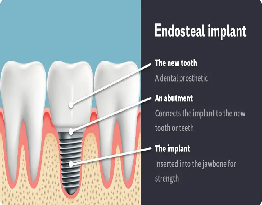
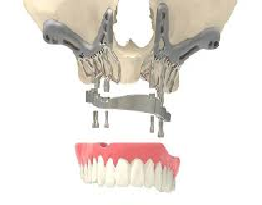
Subperiosteal Implants are dental implants placed under the gum but on or above the jawbone, rather than into it. These implants are typically used for patients who lack sufficient bone density and cannot undergo bone grafting. A metal framework is positioned on the jawbone, and over time, it fuses with the gum tissue, with posts extending through the gums to support artificial teeth. Subperiosteal implants are a less common option but offer a solution for those with limited bone structure.
Dental implants may either be inserted by a dentist specially training in implantology, or by an oral surgeon in a hospital.
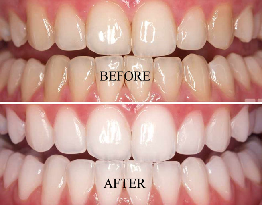
Teeth whitening is one of the most sought-after cosmetic dentistry treatments, designed to brighten teeth and remove stains or discoloration caused by aging, food, drinks, and tobacco use. Professional teeth whitening provides faster and more dramatic results compared to over-the-counter whitening products, leaving you with a noticeably whiter smile.
Teeth whitening offers several advantages, including enhancing the overall appearance of your smile by removing stains and discoloration caused by food, drinks, aging, or lifestyle habits. It boosts self-confidence, making individuals feel more attractive and motivated in social or professional settings. The procedure is quick, non-invasive, and widely accessible, with both professional treatments and at-home kits available. Additionally, teeth whitening is a relatively affordable cosmetic solution, providing noticeable results that can last for months with proper care.
While teeth whitening can enhance the appearance of your smile, it does have some Disadvantages. The most common side effects include tooth sensitivity and gum irritation, which can occur during or after treatment, especially with overuse or improper application. The results are not permanent and may require touch-ups over time, particularly if you consume staining foods or beverages. In some cases, uneven whitening can occur if there are dental restorations like crowns or veneers, as they don't whiten like natural teeth. Additionally, some whitening products may cause enamel damage if used excessively.
Teeth whitening is a simple, non-invasive procedure that can be done in-office or with take-home kits provided by your dentist. In-office whitening typically involves applying a whitening gel to the teeth and activating it with a special light to accelerate the whitening process. The treatment usually takes about an hour, and the results are visible immediately.
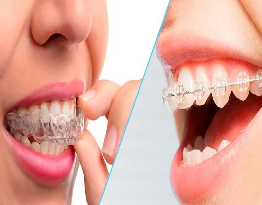
Invisalign and other clear aligner systems are popular alternatives to traditional metal braces, offering a nearly invisible way to straighten teeth. These custom-made aligners gradually shift the teeth into the desired position, allowing patients to improve their smile without the aesthetic concerns of metal braces.
Invisalign and clear aligners offer several advantages for those seeking a discreet and convenient way to straighten teeth. They are virtually invisible, making them an aesthetically appealing option compared to traditional braces. The aligners are removable, allowing you to eat, drink, brush, and floss with ease. They are also more comfortable, as they don’t have wires or brackets that can irritate the gums and mouth. Invisalign and clear aligners provide a customized fit and often require fewer visits to the dentist, making them a convenient and flexible choice for orthodontic treatment.
Invisalign and clear aligners, while popular for their discreet appearance and convenience, do have some disadvantages. They require strong patient discipline, as they must be worn for at least 20-22 hours a day to be effective, and frequent removal for eating and drinking can be inconvenient. Aligners can be easily misplaced or damaged, leading to treatment delays. They are also not suitable for treating severe orthodontic cases, and the cost can be higher compared to traditional braces. Additionally, some patients may experience initial discomfort or irritation as they adjust to the aligners.
Invisalign treatment begins with a digital scan of your teeth, which is used to create custom-made aligners. You’ll wear each set of aligners for about two weeks, gradually shifting your teeth into place. Invisalign offers flexibility, as the aligners can be removed for eating, drinking, and brushing, allowing for a more comfortable and convenient orthodontic experience.
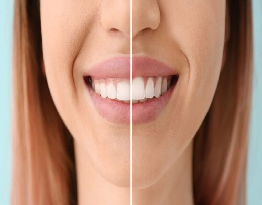
Gum contouring is a cosmetic dental procedure that reshapes the gum line to create a more symmetrical and aesthetically pleasing smile. It is often used to correct a “gummy” smile or uneven gum lines, helping to reveal more of the teeth and create a balanced look.
Dental bonding provides several advantages as a simple and affordable cosmetic dental solution. It can quickly repair minor imperfections like chipped, cracked, or discolored teeth, as well as close small gaps, usually in a single visit. The procedure is non-invasive, requiring little to no tooth preparation or anesthesia, and the composite resin used is matched to the color of your teeth for a natural appearance. Dental bonding is also reversible and more affordable than other cosmetic treatments like veneers or crowns, making it an ideal option for minor aesthetic improvements.
Dental bonding has some disadvantages despite its affordability and ease of application. The composite resin used is not as durable or stain-resistant as materials like porcelain veneers or crowns, meaning it can chip, crack, or discolor over time, especially with habits like chewing on hard objects or consuming staining foods and drinks. It generally lasts a few years before requiring touch-ups or replacement. Additionally, dental bonding may not be suitable for more extensive dental issues, as it’s best for minor cosmetic corrections, and may need more frequent maintenance compared to other cosmetic options.
Gum contouring is performed using a laser or scalpel to carefully remove excess gum tissue and reshape the gum line. The procedure is minimally invasive, and the recovery time is relatively short. Gum contouring can dramatically enhance the appearance of your smile by creating a more proportionate and balanced gum-to-teeth ratio.
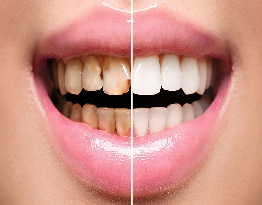
Veneers, porcelain or plastic are placed over the front teeth to change color and shape of the teeth. Veneers are ideal for teeth that are too tooth veneerssmall, too big, or have uneven surfaces. It is very common for people to have imperfect teeth, either oddly shaped teeth, chipped teeth, crooked teeth, teeth with small holes in them, or an inappropriate sized tooth or teeth that have an odd appearance. Veneers solve such irregularities and create a durable and pleasing smile.
When creating new smiles and smile makeovers, porcelain veneers are commonly used. The procedure can be completed in a very short period of time with satisfying results. Veneers are difficult to stain, making veneers a very popular solution for many people seeking that perfect smile. Veneers are strong and very durable and last from ten to fifteen years. They come in different colors which brighten dark teeth without the worry of them changing color. The procedure is done in two sittings which typically last for about one and a half hours.
It takes about a week or two to get used to your teeth that have been changed in color size and shape. Usually in most cases very little tooth is removed but there can be situations where more tooth has to be removed. In such cases the trauma to the tooth increases. The amount of the tooth to be removed will be discussed with you by the cosmetic dentist before the procedure.
It is common to have minor sensitivity after your teeth have been prepared for your veneers while wearing the temporary veneers.
In your first appointment, it is important to initially discuss with your cosmetic dentist that you will want to "try in" your veneers with temporary cement that is the same color cement as will be used for the permanent attachment. During this, be sure to look at your veneers in natural light in addition to the office light. Teeth are prepared for veneers by lightly buffing to allow for the small added thickness of the veneer. Veneers are thin like contact lenses and will usually only need tooth reduction of 0.5mm to 1.0mm. If a drastic change is being made for the result you want, reduction may be 1.0mm to 2.0mm. A mold is taken of the teeth, from which the veneers are modeled after. Temporary veneers will be placed and worn until your permanent veneers are ready. While wearing the temporary veneers, advise your cosmetic dentist of any adjustments or changes you would like made, such as in shape or size. These changes will be translated into your permanent veneers, so good communication between you and your dentist is important in achieving your new smile.
Your dentist places the veneers with water or glycerin on the teeth to verify their perfect fit and the shade or color. The color cannot be changed after the veneers are adhered to your teeth. The tooth is then cleansed with chemicals to achieve a durable bond. Once the glue is between the veneer and your tooth, a light beam is used to harden the glue/cement.
The procedure for Lumineers is different than the above traditional porcelain veneers. Still two visits, but there is little to no preparation of the tooth and no need for temporary veneers.
Composite (direct) veneers are usually performed in a single visit to your cosmetic dentist. The procedure is an application of a bond and enamel directly to the tooth's surface.
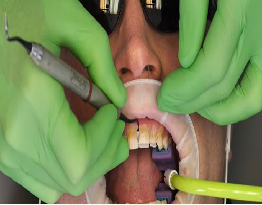
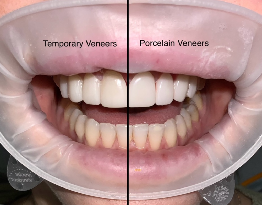
Porcelain (indirect) veneers are a very thin porcelain material. Usually porcelain veneers require two visits and also require a dental laboratory to create the final tooth restoration piece.
Made of Cerinate porcelain, Lumineers are a new type of porcelain veneers. They are contact lens-thin, roughly .2 mm thick. Little to no tooth reduction in most cases is necessary with this type of veneer and anesthetics or numbing shots are not needed.
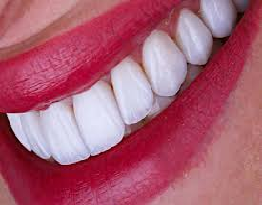
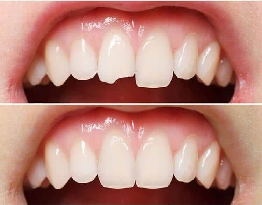
Dental bonding is a quick and effective procedure used to repair chipped, cracked, or discolored teeth. During the procedure, a tooth-colored resin is applied to the affected tooth and shaped to blend seamlessly with the surrounding teeth. Bonding can be an excellent solution for minor cosmetic imperfections, providing immediate results.
Dental bonding offers several advantages as a quick and cost-effective cosmetic solution for improving the appearance of your teeth. It can correct issues like chipped, cracked, discolored, or gapped teeth with minimal preparation. The procedure is non-invasive, usually requiring little to no anesthesia, and can typically be completed in a single visit. Dental bonding also provides natural-looking results, as the composite resin used can be matched to the color of your teeth. Additionally, it is a reversible treatment, making it a flexible option for minor dental imperfections.
Dental bonding has some disadvantages despite its benefits. The material used is not as durable as other cosmetic options, such as veneers or crowns, and can chip or stain more easily over time, especially with habits like biting nails or consuming staining foods. It typically lasts a few years before needing repairs or replacements. Additionally, dental bonding is less resistant to wear and tear, making it less suitable for larger restorations or areas exposed to heavy chewing forces. The bonding may also not blend perfectly with surrounding teeth, especially if used for extensive cosmetic work.
The bonding process involves applying a tooth-colored resin to the damaged area, which is then hardened using a special light. The dentist sculpts and polishes the resin to match the surrounding teeth, creating a natural and seamless repair. Bonding typically takes less than an hour and requires no downtime.
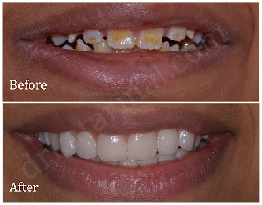
A smile is something that bridges the large gap between any two individuals. In fact a pretty smile can disarm the strongest of opponents smile designin any argument. The teeth play a very important role in creating a perfect smile. It is necessary to have good set of teeth and to be in harmony with the face, the lip line, the curvature of the mouth, etc. The same size and shape of teeth in one smile would look very aesthetic, while in another, they would not. Dentistry is able to alter, reorganize and reposition teeth and the tooth structure can be altered in terms of color, position size and texture without any harmful effects and make it look, feel and behave in the same fashion as natural teeth.
A Smile Designing Makeover offers numerous advantages, transforming your smile through personalized cosmetic dental procedures. It improves both the appearance and function of your teeth, addressing issues like discoloration, misalignment, gaps, or worn teeth. The makeover enhances self-confidence, giving you a more youthful and attractive smile tailored to your facial features. It can involve treatments like veneers, crowns, or teeth whitening, all customized to meet your aesthetic goals. Additionally, the results are long-lasting, with modern techniques providing natural-looking and durable improvements.
While a Smile Designing Makeover can dramatically improve your smile, it has some disadvantages. The procedures involved, such as veneers or crowns, are often irreversible, requiring the permanent alteration of natural teeth. It can also be costly, depending on the complexity and number of treatments required. Some patients may experience temporary discomfort or sensitivity following procedures. Additionally, the maintenance of the results requires proper oral care and, in some cases, future touch-ups or replacements to sustain the aesthetic appearance over time.
Aesthetic dentistry usually requires a lot of teamwork. Teeth which are not in the proper position, are generally corrected by moving the teeth into the correct position. Such movements may be very minor or gross shifting around of teeth. A dental specialist, known as an "Orthodontist" does shifting of teeth. If the shifting is minor, it may take only a couple of months, but gross shifting may take upto two years and involve full fledged wiring of the teeth. In case time is not available or movement of teeth with wires is not feasible, certain malpositions of teeth can be rectified by reshaping teeth by grinding and adding special materials which have the look and texture of natural teeth. Such a job can be achieved within a matter of days. Another specialist, the "Periodontist" plays a role when a discrepancy of the gums to the teeth is to be corrected. Such corrections usually require a minor surgical procedure. A Periodontist also surgically removes pigments or stains in the gums.
The cosmetic dentist looks into and rectifies other situations once the tooth movement and gum correction are done. These corrections are done by a variety of techniques. It is possible to directly bond "composite", a tooth colored restorative material, over the teeth to reshape, rectify size and color of the teeth. If the problem is severe, the cosmetic dentist uses veneers made of ceramic based materials to rectify the problem. There are many aids and tools available to be able to re-design a smile as perfectly as possible. Computer aided graphics, mock ups with special materials, etc., are some techniques which give both, the patient as well as the dentist, a good idea of what will look good and what will not.
Smile re-designing is more like a painting than just a dental procedure. The ultimate result depends on the artistic skills of the dentist, just as the artistic skills of a painter dictate the end result of a painting. The small delicate touch is what distinguishes a class work of art from just a technically correct job.
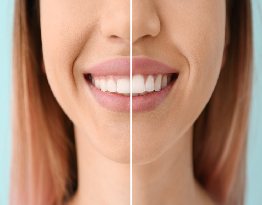
A small defect in your smile, a chipped front tooth, worn out edges, pittings and grooves on the enamel are all issues against having a perfect smile. A tooth contouring and reshaping helps u to achieve the perfect smile. The main aim of tooth contouring and reshaping is to alter the size and shape of the teeth to fix slightly damaged teeth or just to make the teeth appear in uniformity. Hence this cosmetic procedure is done on the upper central, lateral and canine teeth. Apart from having cosmetic benefits, this procedure ensure oral health gains too as smoothing the teeth and repairing overlaps can make them easier to clean, reducing the risk of infection. Reshaping can help correct problems with bite and function.
The surface enamel of one or more teeth are removed using various tools and reformed into a more attractive shape. TTooth contouring and reshapinghe imperfections and edges of surrounding teeth are smoothened and polished using a polishing tool.
An examination of your teeth is done to determine whether the defects that are present can be corrected effectively using contouring and reshaping. The dentist will also x-ray the teeth to make sure that they are healthy enough to undergo removal of a small amount of the surface enamel.
Tooth contouring and reshaping can be undertaken in one sitting although follow-up visits are necessary. Using various tools, the dentist carefully polishes off small areas of the tooth surface enamel and reforms the tooth into a more attractive shape. The edges of the newly shaped tooth are smoothed and polished, completing the procedure. An "after" photograph is made at this point to compare with the photograph taken prior to treatment so the differences can be easily seen. After contouring, the teeth are more uniform in shape and size making them appears less crowded and eye-catching imperfections are gone. The length of the procedure is dependent on the amount of changes that are being made to the teeth, but can run from under 30 minutes to over an hour.
Since only the surface enamel is removed, there is no pain involved with the procedure. Minor sensitivity to hot and cold for a day or two after the procedure would be there. But this irritation almost disappears, a short time after the procedure. Recovery for almost every patient undergoing tooth contouring or reshaping is instantaneous. Oral consumption is possible soon after the procedure. The removal of the small amount of enamel does not hurt the tooth nor is it replaced, so no healing is involved.
An ideal candidate would have minor imperfections in their teeth such as small chips, minor unevenness, slight overlaps, shallowly pitted surfaces or worn biting areas in their teeth. Other indications for this procedure would be large pointed canine teeth. It has to be noted that reshaping can be done only on healthy teeth. Hence the dentist usually has x-rays taken to ensure there are no problems.
Some characteristics of the teeth that might preclude reshaping are: thin enamel, previous extensive restorations of the tooth or surrounding teeth, recently erupted teeth, teeth having gum structure that would be disturbed by the procedure, or teeth that are still shifting. Some contouring is not recommended if it will adversely affect the patient's bite.
There are risks involved with tooth contouring. Too much of enamel may be removed which would make the tooth more susceptible to breakage or decay. The problem may re-occur if it is due to grinding of teeth. However, seeing an experienced cosmetic dentist virtually eliminates these risks.
Cosmetic dentistry offers both aesthetic and functional benefits that can improve your overall quality of life. Here are some of the key advantages:
Enhanced Appearance: Cosmetic dentistry can address various imperfections, from discolored teeth
to misalignments, creating a smile that looks brighter and more harmonious.
Improved Oral Health: Many cosmetic procedures, such as dental implants and crowns, not only
enhance your appearance but also improve the health and function of your teeth.
Boost in Confidence: A smile that you feel proud of can have a positive impact on your confidence
and self-esteem, improving your interactions in both personal and professional settings.
Long-Lasting Results: With advancements in cosmetic dental techniques, many treatments offer
long-lasting results, ensuring that your investment in your smile is worth it.
At Best Cosmetic Hospitals, we’re here to help you achieve the smile you’ve always wanted. With access to top cosmetic dentists around the world, we ensure that you receive expert care and personalized treatment plans tailored to your goals. Whether you’re seeking a minor enhancement or a full smile makeover, our network of professionals is ready to guide you on your journey to a brighter, more confident smile.